Post-Mauryan Trends in Indian Art and Architecture Chapter Notes | Fine Art for Class 11 - Humanities/Arts PDF Download
Introduction
- Various rulers established their control over the Mauryan Empire from the second century BCE onwards.
- Rise of the main Brahmanical sects such as Vaishnavas and Shaivas in the second century BCE.
- Numerous sites dating back to the second century BCE in India, such as Vidisha, Bharhut, Bodhgaya, Jaggayyapeta, Mathura, Khandagiri-Udaigiri, Bhaja, and Pavani.
Bharhut
- Bharhut sculptures are tall, like the images of Yaksha and Yakhshini in the Mauryan period.
- Modelling of sculptural volume is in low relief maintaining linearity, and images stick to the picture plane.
- In narrative panels, an illusion of three-dimensionality is shown with tilted perspective.
- Clarity in the narrative is enhanced by selecting main events, and at Bharhut, narrative panels are shown with fewer characters.
- Availability of space is utilized to the maximum by the sculptors.
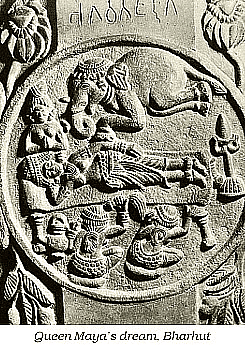
- Folded hands in narratives, as well as single figures of Yakhshas and Yakshinis, are shown flat clinging to the chest.
- Gradually, images were made with deep carvings, pronounced volume, and a very naturalistic representation of human and animal bodies.
- Narrative reliefs at Bharhut show how artisans used the pictorial language effectively to communicate stories.
- Regional stylistic variations also began to emerge with the rise in the construction of stupas in various parts of the country.
- One main characteristic in all the male images of the first-second centuries BCE is the knotted headgear.
Sanchi
- The next phase of sculptural development is noteworthy in the stylistic progression.
- Sanchi Stupa-1, Mathura, and Vengi in Andhra Pradesh (Guntur District) are prominent in this phase.
- Stupa-1 at Sanchi has upper as well as lower pradakshinapatha or circumambulatory path, and it has four beautifully decorated toranas depicting various events from the life of the Buddha and the Jatakas.
- Figure compositions are in high relief, filling up the entire space, and depiction of posture gets naturalistic with no stiffness in the body.
- Heads have considerable projection in the picture space, and rigidity in the contours gets reduced.
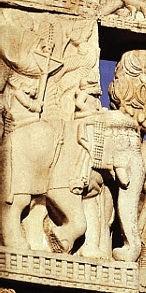
- Narration gets elaborated, and carving techniques appear more advanced than Bharhut.
- Symbols continue to be used representing the Buddha, and narratives get more elaborated, showing historical events such as the siege of Kushinara, Buddha's visit to Kapilavastu, and visit of Ashoka to the Ramgrama Stupa.
- In Mathura, images of this period bear the same quality but are different in the depiction of physiognomic details.
Mathura, Sarnath and Gandhara
- Mathura and Sarnath are two important sites where Buddha images in stone are found.
- The images from Mathura have a local flavour in the depiction of physiognomic details.
- In Sarnath, the image is shown seated in a particular posture with the right hand raised in the gesture of fearlessness and the left hand resting on the lap with palm facing upwards.
- This posture is known as the Dharmachakra Pravartan Mudra.
- Gandhara region (present-day Pakistan) was an important centre for the spread of Buddhism.
- Sculptures from Gandhara show a blend of Indian and Greek-Roman style.
- Buddha images from this region are shown in a standing posture with Greek-Roman style drapery.
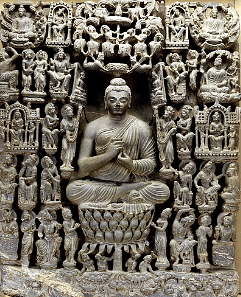
Buddhist Monuments of South India
Stupa Sites in Vengi, Andhra Pradesh
- Jagayyapetta, Amaravati, Bhattiprolu, Nagarjunkonda, and Goli are stupa sites located in Vengi, Andhra Pradesh.
- The Amaravati Stupa has a mahachaitya and many sculptures, some of which are preserved in different museums.
- The Amaravati Stupa has pradakshinapatha enclosed within a vedika with many narrative sculptures depicted on it.
- The stupa structure is covered with relief stupa sculptural slabs, which is a unique feature.
- The torana of the Amaravati Stupa has disappeared over time.
- Events from the life of the Buddha and the Jataka stories are depicted on the stupa.
Development and Characteristics of Amaravati Stupa
- The Amaravati Stupa shows evidence of construction activity in the third century BCE but was best developed in the first and second centuries CE.
- The early phase of the Amaravati Stupa is devoid of Buddha images, but they are present in the later phase, in the second and third centuries CE.
- The sculptural form in this area is characterized by intense emotions, slender figures with a lot of movement, and complex sculptural composition.
- The idea of creating three-dimensional space in the relief sculpture is devised by using pronounced volume, angular bodies, and complex overlapping.
- The clarity of form has been given absolute attention despite the size and role in the narrative.
- Narratives are profusely depicted, including events from the life of the Buddha and the Jataka stories.
- A number of Jataka scenes have not been completely identified.
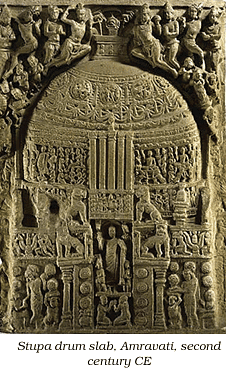
Sculptures in Nagarjunkonda and Goli
- Animated movement in the figures gets reduced in the sculptures of Nagarjunkonda and Goli in the third century CE.
- Despite the relatively low relief volume, artists at Nagarjunkonda and Goli managed to create the effect of protruding surfaces of the body, which is suggestive in nature and looks integral.
- Independent Buddha images are also found at Amaravati, Nagarjunkonda, and Guntapalle in Andhra Pradesh.
Rock-cut Sites
- Guntapalle is a rock-cut cave site near Eluru that has small apsidal and circular chaitya halls belonging to the second century BCE.
- The other important site where rock-cut stupas have been excavated is Anakapalle near Vishakhapatanam.
- Sannati in Gulbarga district, Karnataka, is the largest stupa site excavated so far and has a stupa decorated with sculptural relief.
Structured Temples and Viharas
- There were evidences of structured temples or viharas or chaityas, but none have survived.
- Sanchi apsidal chaitya structure, i.e., temple 18, is a simple shrine temple having front pillars and a hall at the back.
- Along with the images of the Buddha, other Buddhist images of Boddhisattvas like Avalokiteshvara, Padmapani, Vajrapani, Amitabha, and Maitreya Buddha started getting sculpted.
- With the rise of Vajrayana Buddhism, many Boddhisattva images were added as a part of the personified representations of certain virtues or qualities as propagated by the Buddhist religious principles for the welfare of the masses.
Cave Tradition in Western India
- Buddhist caves in western India dating back to 2nd century BCE onwards have been excavated.
- Three architectural types: apsidal vault-roof chaitya halls, apsidal vault-roof pillarless halls, flat-roofed quadrangular halls.
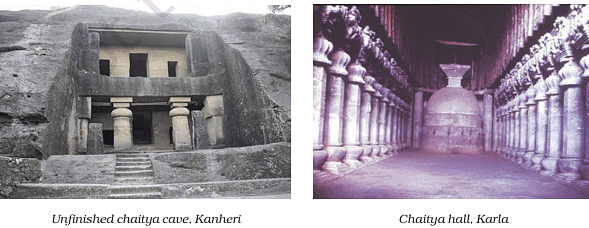
Apsidal vault-roof chaitya halls
- Found at Ajanta, Pitalkhora, Bhaja.
- Dominated by semi-circular chaitya arch motif at front with a wooden facade.
- A stupa at the back is common.
Apsidal vault-roof pillarless hall
- Found at Thana-Nadsur in Maharashtra.
- Flat-roofed quadrangular hall with a circular chamber at the back:
- Found at Kondivite in Maharashtra.
- Became most preferred design.
Modifications
- In the 1st century BCE, some modifications were made to the standard plan of the apsidal vault-roof variety where the hall becomes rectangular like at Ajanta Cave No. 9 with a stone-screen wall as a facade.
- Also found at Bedsa, Nashik, Karla and Kanheri.
- Karla has the biggest rock-cut chaitya hall excavated.
Viharas
- Excavated in all cave sites.
- Plan consists of a veranda, a hall, and cells around the walls of the hall.
- Some important vihara caves: Ajanta Cave No. 12, Bedsa Cave No. 11, Nashik Cave Nos. 3, 10 and 17.
- Interior decorative motifs like chaitya arches and vedica designs over the cell doors of the cave.
- Facade design in Nashik Cave Nos. 3, 10, and 17 became a distinct achievement.
Junnar
- Vihara cave was excavated with front pillars carved with ghata-base and ghata-capital with human figures.
- Known as Ganeshleni because an image of Ganesha belonging to a later period was installed in it.
- Later, a stupa was added at the back of the hall of the vihara and it became a chaityavihara.
- Junnar has the largest cave excavations— more than two hundred caves around the hills of the town— whereas Kanheri in Mumbai has a hundred and eight excavated caves.
Ajanta
- Ajanta Caves are located in the Aurangabad district of Maharashtra state.
- It is the most famous cave site with 29 caves.
Early Phase of Ajanta Paintings
- Ajanta has four chaitya caves, two belonging to the second and first century BCE (Cave Nos. 10 and 9) and two to the fifth century CE (Cave Nos. 19 and 26).
- Caves at Ajanta and western Deccan have no precise chronology due to lack of known dated inscriptions.
- Cave Nos. 10, 9, 12 and 13 belong to the early phase, Cave Nos. 11, 15 and 6 upper and lower, and Cave No. 7 belong to the phase earlier than late fifth century CE.
- The rest of the caves belong to late fifth century CE to early sixth century CE.
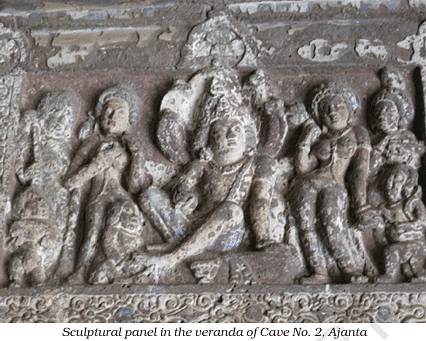
- The chaitya Cave Nos. 19 and 26 are elaborately carved, decorated with Buddha and Boddhisattva images and of the apsidal-vault-roof variety.
- Cave No. 26 is the largest and contains the Mahaparinibbana image.
- Rest of the caves are vihara-chaitya caves with a pillared veranda, a pillared hall and cells along the walls.
- Shrine images at Ajanta are grand in size, with some of the vihara caves remaining unfinished.
- Important patrons at Ajanta were Varahadeva, Upendragupta, Buddhabhadra, and Mathuradasa.
- Many paintings have survived in Cave Nos. 1, 2, 16 and 17
Second phase of Ajanta Caves Paintings
- Paintings have typological variations.
- Outward projections are used in Ajanta paintings of the fifth century CE with clearly defined lines and a rhythmic effect.
- Figures are heavy like sculptures of western India and merge with the outer line creating a volume effect.
- Caves of the early phase have paintings, especially Cave Nos. 9 and 10 belonging to the first century BCE with broad figures arranged linearly in the picture space, sharp lines and limited colours.
- Figures in these caves are painted with considerable naturalism and no overstylisation.
- Separation of geographic location is indicated by outward architectural bands.
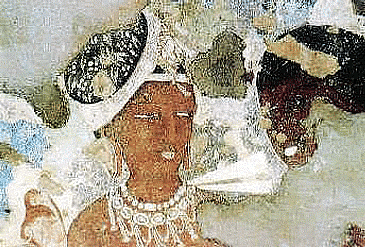
- The second phase of paintings can be studied from the images of Buddhas painted on the walls and pillars of Cave Nos. 10 and 9.
- Paintings of Cave Nos. 16, 17, 1, and 2 have typological variations, with various skin colours used such as brown, yellowish brown, greenish, yellow ochre, etc., which represent a multicoloured population.
- Paintings of Cave Nos. 16 and 17 have precise and elegant painterly quality with rhythmic movements and forceful lines.
- Paintings of Cave Nos. 1 and 2 are very orderly and naturalistic, well integrated with the sculptures in the caves, with half-closed, elongated eyes employed and different guilds of artisans seem to have worked on them.
- The themes of the paintings are events from the life of the Buddha, the Jatakas and the Avadanas, with some paintings such as Simhala Avadana, Mahajanaka Jataka and Vidhurpundita Jataka cover the entire wall of the cave.
- In Cave No. 10 Chaddanta faithfully follows the Pali text whereas the one painted in Cave No. 17 is very different.
- The Ajanta caves are known for their paintings, particularly the Padmapani and Vajrapani in Cave No. 1, which are well-preserved.
Ellora
- Ellora is located in Aurangabad district, one hundred kilometers from Ajanta, and has thirty-four caves associated with Buddhist, Brahmanical, and Jain religions.
- The site has monasteries dating back to the fifth century CE until the eleventh century CE, making it unique in the country in terms of its art-historical significance.
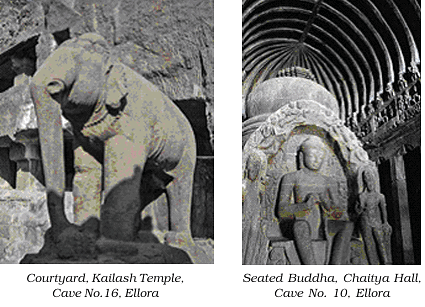
Buddhist Caves
- There are twelve Buddhist caves at Ellora that have images belonging to Vajrayana Buddhism like Tara, Mahamayuri, Akshobhya, Avalokiteshwara, Maitrya, and Amitabha.
- Buddhist caves are big in size and are of single, double, and triple storeys. Pillars are massive, and images of Padmapani and Vajrapani generally guard the shrine Buddha images.
- Cave No. 12, which is a triple-storey excavation, has images of Tara, Avalokiteshwara, Manushi Buddhas, Vairochana, Akshobhya, Ratnasambhava, Amitabha, Amoghsiddhi, Vajrasatva, and Vajraraja.
Brahmanical Caves
- The only double-storey cave of the Brahmanical faith is Cave No. 14.
- Cave Nos. 13-28 have many sculptures dedicated to Shaivism, but images of both Shiva and Vishnu and their various forms according to Puranic narrative are depicted.
- Among the Shaivite themes, Ravana shaking Mount Kailash, Andhakasurvadha, Kalyanasundara are profusely depicted, whereas among the Vaishnavite themes, the different avatars of Vishnu are depicted.
- The sculptures at Ellora are monumental and have protruding volume that creates deep recession in the picture space.
Stylistic Eclecticism
- Ellora is unique in terms of stylistic eclecticism, i.e., confluence of many styles at one place.
- Pillar designs grow from the Buddhist caves, and when they reach the Jain caves belonging to the ninth century CE, they become very ornate, and the decorative forms gain heavy protrusion.
- Various guilds at Ellora came from different places like Vidarbha, Karnataka, and Tamil Nadu and carved the sculptures.
Kailash Leni
- Cave No. 16 is known as Kailash Leni.
- A rock-cut temple has been carved out of a single rock, a unique achievement of the artisans.
Shaivite Caves
- Among the important Shaivite caves are Cave No. 29 and Cave No. 21.
- The sculptural quality of Cave Nos. 29, 21, 17, 14, and 16 is amazing for its monumentality and vigorous movements in the picture space.
Bagh Caves
- The Bagh Caves are located 97 km from Dhar district of Madhya Pradesh.
- They consist of Buddhist mural paintings carved over a period of time during the ancient India mostly during the Satvahana period.
- Out of the original nine caves, only five have survived, all of which are viharas or resting places for monks, having a quadrangular plan.
- Most significant of the five caves is Cave No. 4, commonly known as the Rang Mahal, meaning the Palace of Colours, where paintings on the wall and ceilings are still visible.
- To prevent further loss of the values of the Indian art, most paintings were carefully removed in 1982 and today can be seen in the Archaeological Museum of Gwalior.
Elephanta Caves and Other Sites
- Elephanta Caves located near Mumbai, dominated by Shaivite faith, contemporary with Ellora, sculptures show slenderness and light/dark effects.
- Rock-cut caves found in Deccan, Maharashtra, Karnataka (Badami, Aiholi), Andhra Pradesh (Vijayawada), Tamil Nadu (Mahabalipuram), executed under patronage of various dynasties.
- Post-sixth-century art development in India depended more on political patronage than public patronage.
- Terracotta figurines found all over the country show parallel tradition with lithic sculptures and independentlocal tradition.
- Terracotta figures of various sizes found, including toys, religious figurines, and healing figurines used in belief systems.
Cave Tradition in Eastern India
- Cave tradition in eastern India exists in the coastal region of Andhra Pradesh and Odisha.
- Buddhist caves and monasteries were excavated in the hills in these regions.
Buddhist caves in Andhra Pradesh
- Guntapalle in Eluru district is one of the main sites, with structured stupas, viharas, and caves excavated at one place.
- Guntapallechaitya cave is circular with a stupa in the circular hall and a chaitya arch at the entrance.
- Vihara caves are rectangular with a vaulted roof, carved single-storeyed or double-storeyed without a large central hall.
- Main vihara caves decorated with chaitya arches on the exterior.
- These excavations date back to the second century BCE, with some added in subsequent centuries.
- Rampaerrampallam is another important site with rock-cut stupas on the hillock.
- Anakapalli near Vishakhapatnam has the biggest rock-cut stupas in the country and many votive rock-cut stupas all around the hillock.
Buddhist caves in Odisha
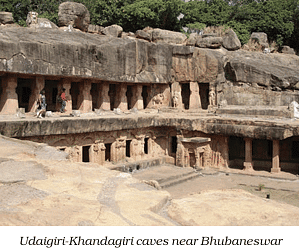
- Udaigiri-Khandagiri caves near Bhubaneswar are the earliest examples with inscriptions of Kharavela Jain kings.
- Caves were meant for Jain monks, with numerous single-cell excavations and caves carved in the shape of animals.
- Big caves include a cave with a pillared veranda with cells at the back decorated with chaitya arches and narratives.
- Some caves in this complex were excavated later, in the eighth–ninth centuries CE.
- Figures in the cave are voluminous, move freely in the picture space, and are an excellent example of qualitative carving.
|
10 videos|24 docs|16 tests
|
FAQs on Post-Mauryan Trends in Indian Art and Architecture Chapter Notes - Fine Art for Class 11 - Humanities/Arts
| 1. What are some key Buddhist monuments in South India? |  |
| 2. What is the significance of the cave tradition in Western India? |  |
| 3. How does the cave tradition in Eastern India differ from that in Western India? |  |
| 4. What are some post-Mauryan trends in Indian art and architecture? |  |
| 5. What makes the Ajanta Caves and Ellora unique compared to other cave sites in India? |  |

















